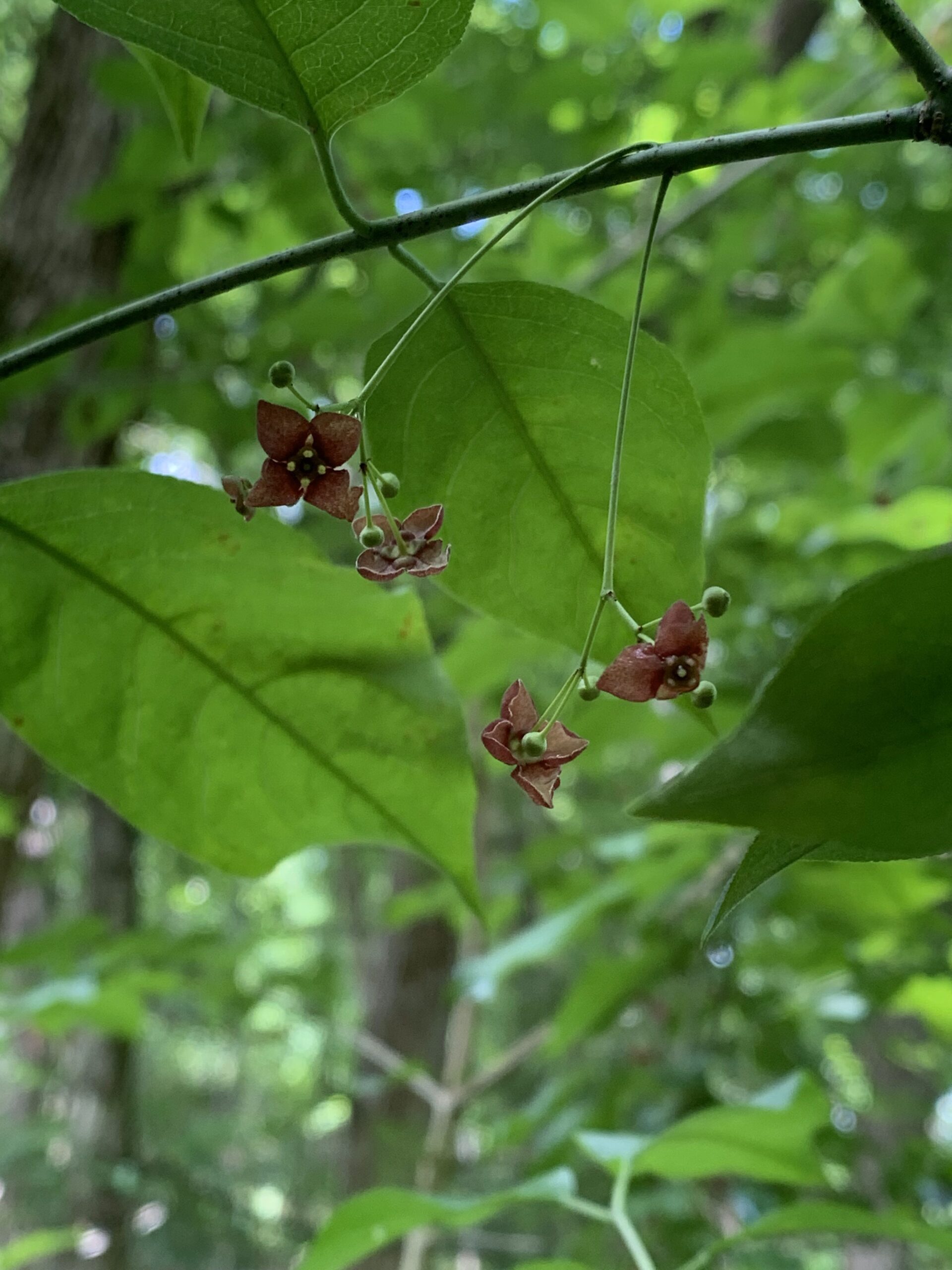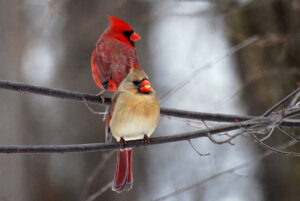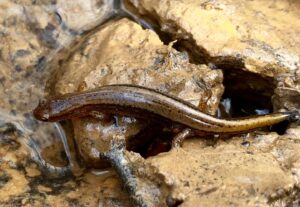by Jacob Crider
Autumn is one the best times each year to explore Kentucky’s woodlands for seed pods, fruits, and nuts. As the fall goes on, the weather cools, the days become shorter, and animals peruse the landscape to gather materials and food to prepare for the coming winter, and plants get their seeds dispersed far and wide. It’s a win-win time for our forests plants and animals, and it’s also a fantastic time to check out the amazing colors our temperate vistas bestow upon us.
One plant to keep your eye out for in October through November is the American Burning Bush (Euonymus atropurpureus). This dashing perennial shrub is a member of the bittersweet family, related to other Kentucky native species such as Strawberry Bush (Euonymus Americana). They are native to temperate forests of the Eastern and Central United States, and are common to uncommon species in the outer bluegrass region of Kentucky. They prefer shady woodlands with medium humus rich-soils, but will flower well and tolerate partly sunny conditions and can tolerate wetter souls.
American Burning Bush blooms in April and May, their flowers are small burgundy four-petaled beauties that open up for a short time to provide forage for small pollinating flies, bees, and beetles. The dark red color resembles that of rotting meat, and the plant employs this strategy to attract more specific pollinators (Trillium, wild ginger, and Carolina Allspice also exhibit this flower color and pollination strategy). The leaves of native Euonymus species in the U.S are of great interest to White-tailed Deer, and should be protected from them if desired in the garden setting.
In the midst of fall, Eastern Burning Bush has a striking display of color. During the abscission process (when leaves change color and eventually drop from the tree or shrub) this bush has a bright peachy-yellow color that can develop into deep reds and pinks. The most notable feature of this autumn plant are the cute pink seed pods, reminiscent of little balloons. The seed pods open up revealing bright scarlet colored seeds, encased in a waxy coating. This feature is the reason you may hear this plant referred to as “Hearts bursting with Love.” Birds will browse the seeds and spread them locally around the forest, and they can also spread by rhizome (root systems).
Related to our native Euonymus species are the aggressive and invasive Winged Burning Bush and Wintercreeper. These plants are a part of the horticulture trade and can spread quickly into woodlands and displace native shrub species like Eastern Burning Bush, Spicebush, Coralberry, and Elderberry. In the landscape and garden setting, planting native Euonymus species is most beneficial to native ecosystems and are easy plants to install and take care of.
At CMNP, we have a small wild population of Eastern Burning Bush in our mature woodlands, and a few specimens in our Woodland Garden. We also have Strawberry Bush in our woodland garden, which have spiky dark red pods rather than the smooth pink pods of E. atropurpureus. Look for the bright seed pods that are opening up at this time of year!



